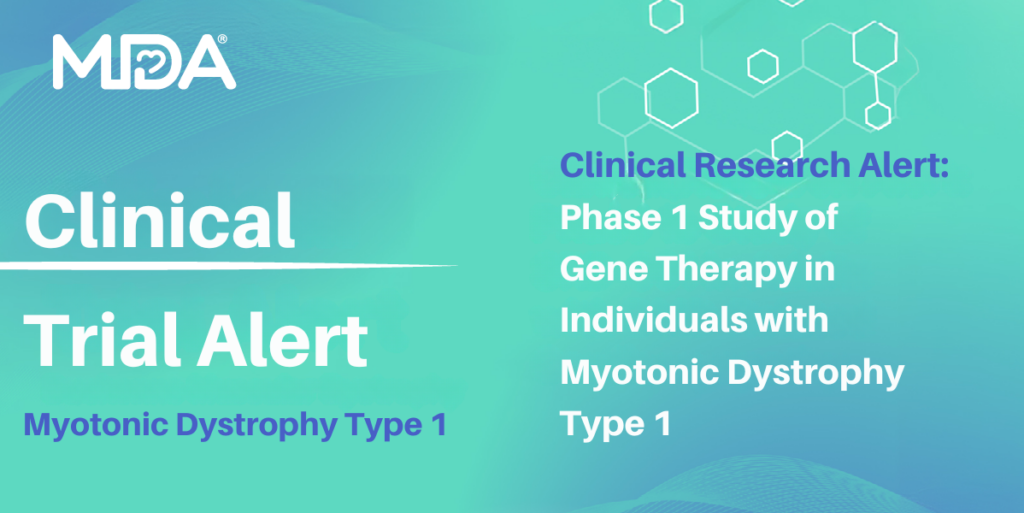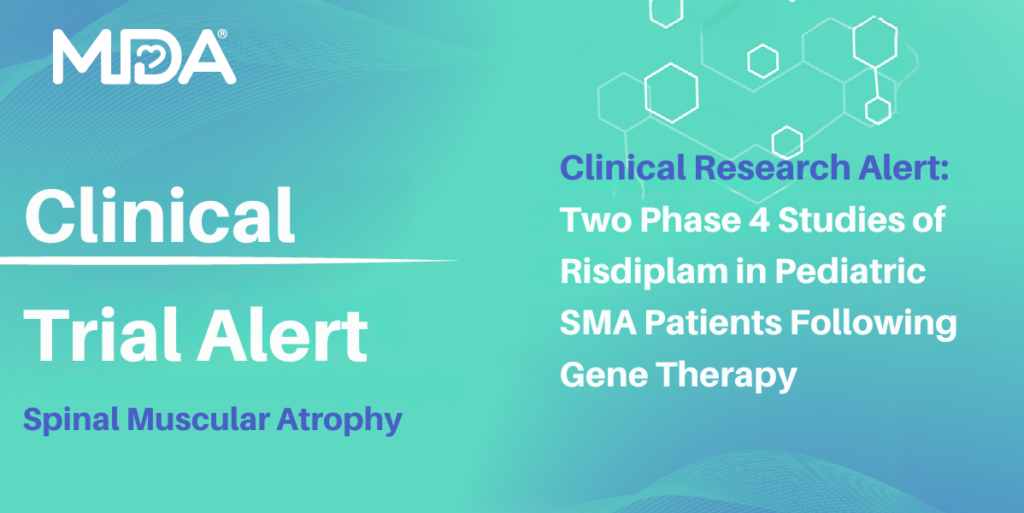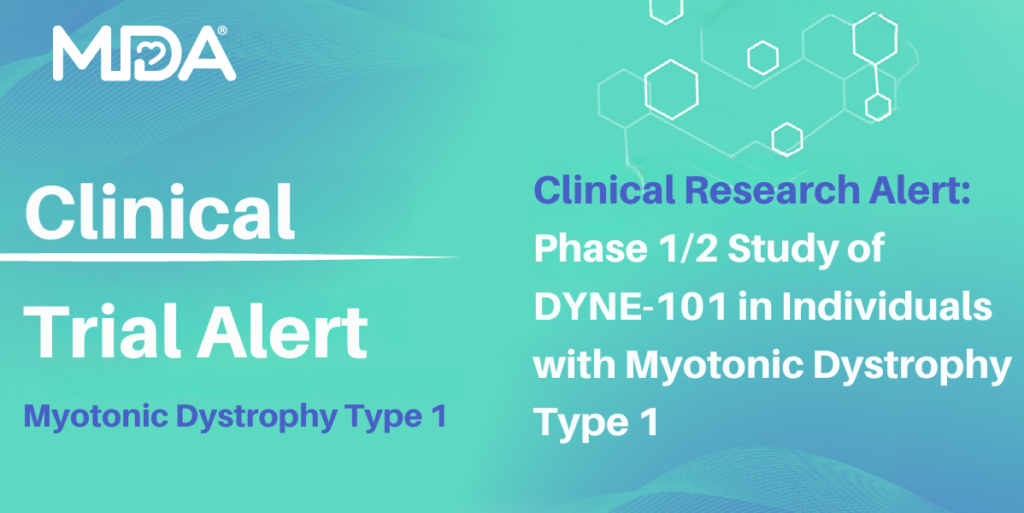
Neuromuscular Disease Research: Going Strong
By Andrew Zaleski | Tuesday, August 19, 2025
Is hope foolish? For 75 years, MDA has been answering with a resounding, “No.”
When New York businessman Paul Cohen founded MDA in 1950, very little was known about neuromuscular disorders, which, at the time, were usually referred to simply as muscle disease. Only one person was interested in studying these diseases: Ade T. Milhorat, MD, a doctor at New York Hospital-Cornell Medical Center. Paul, who lived with facioscapulohumeral muscular dystrophy (FSHD), invited several other families affected by muscular dystrophy to join him in founding MDA and raising money for Dr. Milhorat’s research. This led to a better understanding of muscle diseases and the founding of MDA Care Centers in 1953.
The same hope and determination can be traced through all the major discoveries and breakthroughs in neuromuscular medicine over the last 75 years. Thousands of researchers and clinicians now dedicate their efforts toward treating and, perhaps one day, eliminating neuromuscular diseases that affect millions of people worldwide — including this article’s author. I live with type 1 myotonic dystrophy (DM1), and I hope that MDA’s investments in research might one day lead to a method that blocks the mutated DMPK gene that causes my condition.
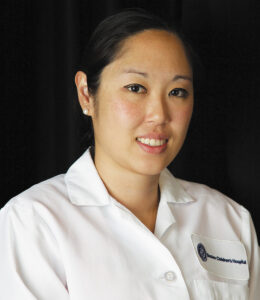
Angela Lek, PhD, Interim Chief Research Officer at MDA
Since MDA’s founding, the organization has poured more than $1.1 billion into supporting research on my own disease and many others, moving closer to answers. “We planted the seed that has now blossomed into an active field of research and drug development in 2025 and beyond,” says Angela Lek, PhD, Interim Chief Research Officer at MDA.
With 20 neuromuscular disease therapies approved in the last 10 years, and a robust research pipeline with thousands of preclinical studies and clinical trials, there is every reason to believe that the extraordinary progress the field has made will continue.
Hope leads to landmark discoveries
Over the decades, MDA has supported research in areas that other organizations deemed impossible.
Much of the early study into muscular dystrophy focused on the muscle itself, aiming to understand how muscle tissue formed and functioned. A leader in this area was physiologist Don Wood, PhD, MDA’s Immediate Past President and CEO.
In 1976, Dr. Wood developed the technology to measure the strength of muscle fibers from muscle biopsies. This method was commonly used to measure strength in people with Duchenne muscular dystrophy (DMD), Becker muscular dystrophy (BMD), and myotonic dystrophy (DM). Grants from MDA helped fund this work.
In 1983, while serving as MDA’s head of research, Dr. Wood established a task force on genetics. Because many neuromuscular diseases are hereditary, he concluded, it was vital to identify their genetic causes. MDA awarded funding for this research to several labs, and in 1986, geneticist Louis Kunkel, PhD, was the first to succeed, identifying the genetic defect responsible for DMD and BMD.
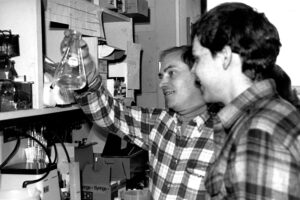
Louis Kunkel, PhD (left), identified the dystrophin gene in 1986.
It was a landmark discovery, one that still resonates, transforming the field of neuromuscular medicine by demonstrating that treating many neuromuscular diseases may be possible at the genetic level.
“At the time, we knew a lot about the symptoms of neuromuscular diseases, and we knew they’re genetic because we could see the inheritance patterns, but until we began to find the genes, it was hard to make progress,” says MDA Interim President and CEO Sharon Hesterlee, PhD. “That was a big breakthrough.”
Dr. Wood recalls that, before Dr. Kunkel’s discovery, the National Institutes of Health (NIH) rejected his application for a research grant. The NIH told him the technology didn’t exist to look for the genetic defect. Without MDA’s funding, the discovery might not have happened until much later.
It’s a sentiment that Jeffrey Chamberlain, PhD, knows well. Now the director of the Senator Paul D. Wellstone Muscular Dystrophy Specialized Research Center in Seattle, he recalls being at his own lab in the early 1990s when peers told him that gene therapy for muscle diseases would never work. He pressed on.
Dr. Chamberlain’s research led to the creation of the first microdystrophin, a modified version of the gene that causes DMD, as well as the adeno-associated virus (AAV) mechanism for delivering genetic material to muscles throughout the body. These innovations have been used in gene therapies approved by the US Food and Drug Administration (FDA), as well as many currently in clinical trials.
“MDA believed in my ideas,” Dr. Chamberlain says. “Without their support, the AAV microdystrophins would have never been developed.”
Building momentum for neuromuscular research
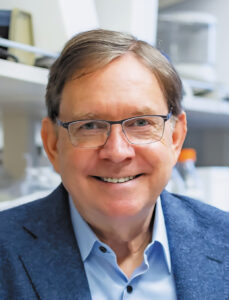
“[MDA] really helped me hit the ground running and start understanding more about DMD and what it might take to come up with a treatment. — Jeffrey Chamberlain, PhD
“MDA was the first to train and recruit scientists and clinicians to study muscle disease,” Dr. Wood says. “The fellowships provided financial security, so people had, in effect, scientific jobs to study muscular dystrophy.”
To date, MDA has supported more than 9,000 scientific investigators focused on various neuromuscular diseases.
But MDA hasn’t just been a funder — it’s also provided inspiration. One of Dr. Chamberlain’s enduring childhood memories is turning on the television during Labor Day weekend to watch comedian Jerry Lewis host the annual MDA
Telethon, which ran from 1966 to 2011. The stories shared by people living with neuromuscular diseases influenced his professional path.
Dr. Chamberlain earned his doctorate degree while working with Stephen Hauschka, PhD, a biochemist at the University of Washington.
In Dr. Hauschka’s laboratory, Dr. Chamberlain and his colleagues were among the first to clone muscle genes and identify the on-off switches that help muscle tissue form as people grow.
“Years later, it turns out that those muscle on-off switches are critical for the development of gene therapy approaches for DMD and many other types of muscular dystrophy,” he says.
MDA provided funding to Dr. Hauschka’s lab, and when Dr. Chamberlain established his own lab at the University of Michigan in 1990, his first grant also came from MDA.
“They really helped me hit the ground running and start understanding more about DMD and what it might take to come up with a treatment,” Dr. Chamberlain says.
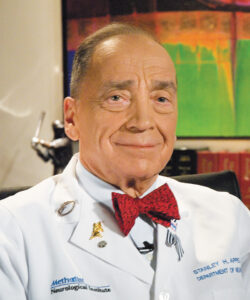
Stanley Appel, MD
But it wasn’t solely in the field of research where MDA made a difference. Stanley Appel, MD, recalls moving to Houston in 1977 to work at Methodist Hospital while heading the Baylor College of Medicine neurology department. There, he had the keen insight that patients with amyotrophic lateral sclerosis (ALS) needed comprehensive evaluations — encompassing walking, breathing, speech, swallowing, and muscular function — and these evaluations should happen in one place, at one time, so patients wouldn’t spend anxious days lining up different appointments. That led to the formation of the ALS Research and Clinical Center at Houston Methodist in 1982, with MDA’s support.
“MDA was there in the beginning, supporting the concept of multidisciplinary care, and we’ve been doing it ever since,” Dr. Appel says. “That is where we’ve made a big difference in quality of life for our patients.”
The next generation of neuromuscular researchers
For 75 years, MDA has invested in hope by supporting talented researchers and clinicians who looked beyond what seemed possible to forge an entirely new field of medical science.
A key to this effort is MDA’s coveted Development Grants, which award three years’ salary and additional funding for supplies and equipment to promising early career scientists pursuing neuromuscular research.
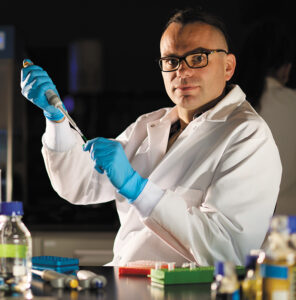
This year, Łukasz Sznajder, PhD, published a scientific paper on a surprising finding: the connection between autism spectrum disorder and type 1 myotonic dystrophy.
Łukasz Sznajder, PhD, an assistant professor of biochemistry at the University of Nevada, Las Vegas, used his MDA Development Grant to develop a research program for type 1 and type 2 DM. This year, Dr. Sznajder published a scientific paper on a surprising topic: the molecular connection between autism spectrum disorder (ASD) and DM1. This finding is significant because it demonstrates a complete mechanism for how ASD can be caused by a genetic mutation.
MDA’s commitment to funding research and supporting clinical care has always been about pushing the boundaries of what’s possible — while keeping in mind that our mission is centered on the individuals and families affected by neuromuscular diseases. Perhaps the best way to take stock of 75 years of MDA history is through the impact made on this community.
“MDA has played a very important, unique, and inspirational role in helping people with various neuromuscular diseases,” says Dr. Appel. “All the experts who have been trained and all the disciplines that have grown under MDA’s leadership take second place to the impact it’s had on patients, their families, and the quality of life for many individuals who might never have had that quality without MDA’s presence.”
Looking forward to future neuromuscular research
While there’s more work to be done, there is reason to celebrate the current state of the neuromuscular field. Research has led to improved treatment and symptom management for many neuromuscular conditions, and new therapies continue to come on the market. Those investigating rare diseases — scientists, doctors, and organizations like MDA — are now turning to a frontier once thought unimaginable: regenerating functional muscle tissue.
By applying modern biomedical knowledge and technology to the science of how muscle tissue forms and functions, researchers hope to develop methods to restore muscle after it is lost to a neuromuscular disease. To this end, MDA held the first international muscle regeneration summit in 2024, bringing together leading researchers on the topic.
The progress doesn’t end there. Current breakthroughs — life-saving gene therapies, rapid diagnostic advances, first-in-class drug approvals — were made possible by the decades of foundational work done by MDA. And we’re only beginning to reap the rewards. According to MDA Interim Chief Research Officer Dr. Lek, the number of drugs approved to treat neuromuscular diseases is expected to grow exponentially over the next decade.
“We envision a future where every person living with neuromuscular disease can benefit from timely diagnosis, individualized care, and transformative therapies,” she says. “Looking back, MDA changed the trajectory of entire lives and disease categories, through decades of partnership with scientists, clinicians, industry, and, most importantly, our patient community.”
Andrew Zaleski is a journalist who lives near Washington, DC. He wrote about living with type 1 myotonic dystrophy (DM1) for GQ magazine.
Next Steps and Useful Resources
- Neuromuscular medicine keeps evolving. Stay up to date and find articles to help you understand the latest scientific advances.
- Stay up to date on Quest content! Subscribe to Quest Magazine and Newsletter.
Disclaimer: No content on this site should ever be used as a substitute for direct medical advice from your doctor or other qualified clinician.


